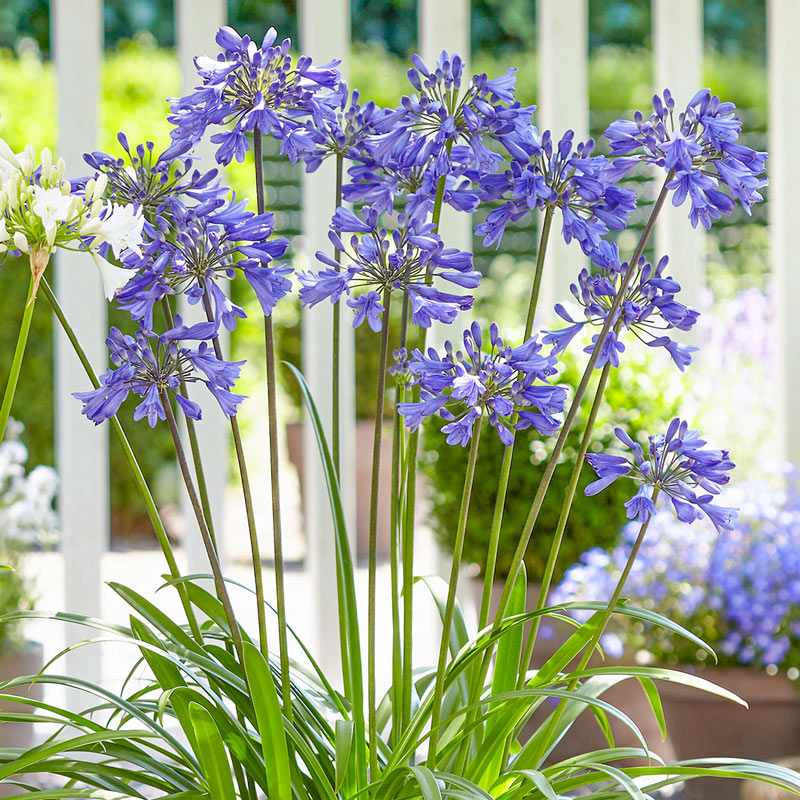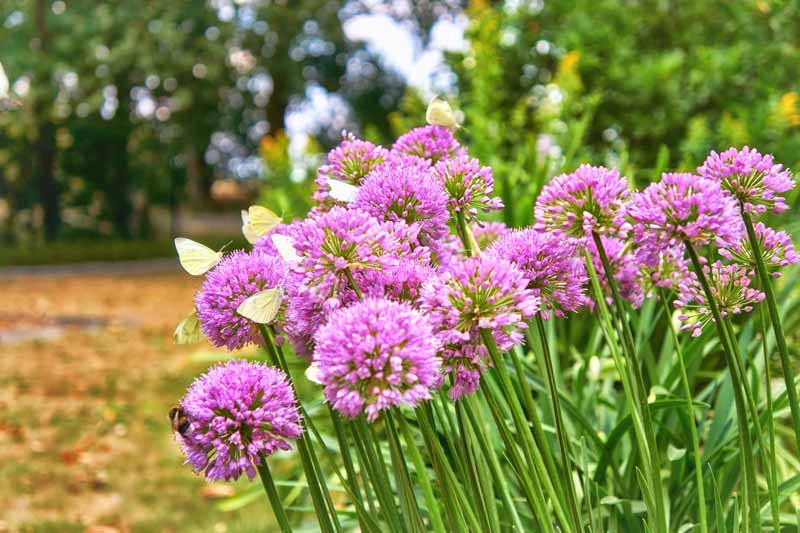Unleashing the Secret to Effective Agapanthus Cultivation: Idea for a Flourishing Garden
In the world of horticulture, cultivating agapanthus efficiently requires a strategic technique that encompasses numerous aspects of plant care. With cautious interest to information, one can unlock the keys to supporting these spectacular flowers, causing a garden that grows with beauty and vibrancy. By comprehending the subtleties of agapanthus farming, one can create an atmosphere where these plants grow and bloom abundantly. In the complying with conversation, we will check out necessary ideas and tricks that will certainly lead you towards a thriving agapanthus garden, supplying insights into finest methods, dirt conditions, watering techniques, and a lot more.
Growing Agapanthus: Ideal Practices
When growing Agapanthus, proper soil preparation is vital for making sure effective development and growth of these lovely flowers. Agapanthus, frequently known as Lily of the Nile or African lily, grows in well-draining dirt with a somewhat acidic to neutral pH degree - Agapanthus. Prior to planting, it is crucial to change heavy clay soils with organic matter such as compost or peat moss to improve drainage and give essential nutrients for the plants
To plant Agapanthus, choose an area that obtains complete sunshine to partial color, as this will certainly advertise healthy and balanced growth and plentiful flowering. Dig an opening two times the size of the plant's root sphere and put the Agapanthus at the exact same depth it was previously growing. Delicately backfill the opening with dirt, pushing down strongly to get rid of any kind of air pockets around the origins.
Water the recently grown Agapanthus extensively and remain to maintain the dirt uniformly wet, specifically during the plant's active expanding period. Agapanthus. Using a well balanced fertilizer once a month can better support the plant's growth and flowering. By following these finest methods for planting Agapanthus, you can create a spectacular display of these exciting flowers in your garden
Suitable Dirt Conditions for Agapanthus
For optimum growth and growing success of Agapanthus plants, making sure the soil conditions are ideal is critical. Agapanthus favors soil that is abundant in nutrients, so integrating a well balanced fertilizer throughout the growing period can promote healthy development and lively blooms.

Watering and Feeding Tips
To guarantee healthy growth and vibrant blooms, proper watering and fertilizing strategies are necessary for successful Agapanthus cultivation. Agapanthus plants benefit from routine watering, particularly during the growing period.
When it involves fertilizing Agapanthus, a well balanced fertilizer with equivalent components nitrogen, phosphorus, and potassium can be applied in the spring to promote healthy growth and flowering. Slow-release plant foods are suitable for providing nutrients gradually over a prolonged duration. Avoid over-fertilizing, as this can cause excessive vegetation growth at the expenditure of blooms.
Additionally, integrating natural issue like garden compost into the soil can boost nutrient levels and improve dirt framework, aiding in the general health and wellness of the Agapanthus plants. By adhering to these watering and fertilizing pointers, garden enthusiasts can ensure their Agapanthus plants flourish and create sensational screens of flowers.
Trimming and Deadheading Strategies
Appropriate trimming and deadheading techniques play an important duty in preserving the health and visual appeals of Agapanthus plants, matching the necessary methods of watering and feeding for effective farming. Pruning Agapanthus entails getting rid of spent flower heads, dead or yellowing leaves, and total shaping of the plant to promote much better growth. Deadheading, the procedure of getting rid of faded flowers, not just enhances the plant's appearance yet also motivates additional growing.
When deadheading Agapanthus, it is suggested to trim off the flower stem at the base utilizing sharp, tidy shears. This process redirects the plant's power from seed production back into root and vegetation growth, advertising a healthier and much more durable plant. Normal deadheading explanation can extend the flowering duration of Agapanthus and protect against self-seeding, which can lead to congestion.
In terms of pruning, Agapanthus generally take advantage of a light trim after flowering to clean the plant and urge fresh growth. Cutting back the spent blossom stems and getting rid of any dead or damaged foliage assists keep the plant's vitality and overall appearance. Nevertheless, it is vital to stay clear of reducing right into the crown of the plant, as this can damage its health.

Protecting Agapanthus From Vermins and Diseases
Applying reliable bug and condition monitoring methods is essential to protecting the health and vitality of Agapanthus plants in cultivation. Agapanthus are generally sturdy plants, however they can still fall victim to different insects and diseases if not properly looked after. One usual insect that influences Agapanthus is the Agapanthus borer, a caterpillar that passages into the plant, creating visit homepage damages to the leaves and flowers. To stop problems, routine examination of the plants is crucial. If borers are found, they can be by hand removed, or insecticidal soap can be used as a control action.
In enhancement to pests, Agapanthus are vulnerable to conditions such as root rot and fungal fallen leave spots. By remaining vigilant and attending to insect and condition concerns without delay, gardeners can aid their Agapanthus grow and grow.

Verdict
To conclude, successful farming of agapanthus needs appropriate growing techniques, excellent dirt problems, sufficient watering and feeding, normal pruning and deadheading, and protection from bugs and diseases. By adhering to these tricks and ideas, garden enthusiasts can make sure a growing garden loaded with beautiful agapanthus blooms. Agapanthus. Bear in mind to preserve regular treatment and attention to information to advertise the health and durability of these stunning plants
When planting Agapanthus, appropriate soil prep work is essential for making sure effective growth and growth of these lovely blossoms.Water the freshly grown Agapanthus thoroughly and continue to maintain the dirt evenly damp, specifically during the plant's energetic growing period.For optimum development and blooming success of Agapanthus plants, making sure the soil problems are suitable is essential. When hair transplanting or growing Agapanthus, make certain the soil is well-prepared to provide the required foundation for the find out this here plants to establish themselves successfully. One typical insect that influences Agapanthus is the Agapanthus borer, a caterpillar that passages right into the plant, triggering damages to the blossoms and leaves.
Comments on “Agapanthus Proliferation: Tips for Expanding Your Plant Collection”